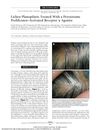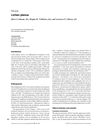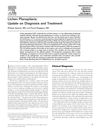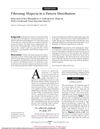It Is Not Invisible! A Case Report of 2 Patients with Scalp Lichen Planopilaris Mimicking Androgenic Alopecia
December 2017
in “
Annals of Dermatological Research
”
TLDR Accurate early diagnosis of Lichen Planopilaris is crucial to prevent permanent hair loss.
This case report described two patients, a 27-year-old male and a 54-year-old female, who were initially misdiagnosed with androgenetic alopecia but were later correctly diagnosed with Lichen Planopilaris (LPP) through dermatoscopic and histopathological analysis. Both patients exhibited symptoms such as scalp thinning, erythema, and pruritus. After the correct diagnosis, they were treated with clobetasol propionate foam, which successfully reduced inflammation, erythema, itching, and fibrosis, stabilizing the condition and preventing further hair loss. The report emphasized the importance of accurate and early diagnosis of LPP to prevent irreversible baldness and improve the quality of life for affected individuals.







